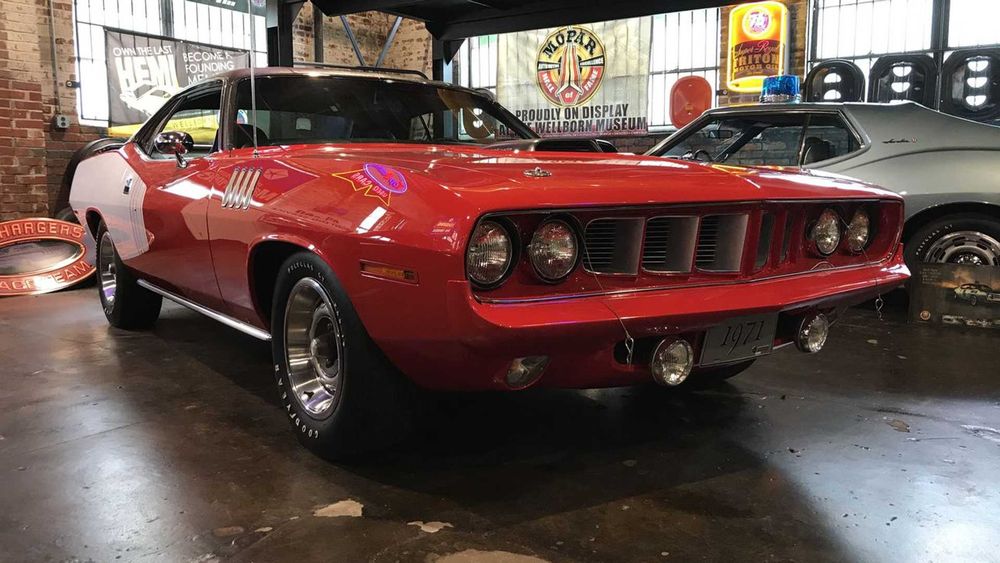For car enthusiasts, few vehicles inspire excitement quite like the Plymouth Barracuda. Emerging as Plymouth’s bold answer to Ford’s Mustang, the Barracuda captivated drivers for a decade between 1964 and 1974. Today, it continues to be cherished as a highly collectible piece of American automotive heritage.
First Generation (1964–1966)
Introduced April 1, 1964, Plymouth’s initial Barracuda leveraged the compact Valiant’s sturdy A-body chassis, sharing a host of its components including hood, doors, and bumpers. Notably distinct was the Barracuda’s dramatic fastback roofline featuring a striking wraparound rear glass panel.
Initially offered with Chrysler’s trusty slant-six engines (101 horsepower 170-ci and 145 horsepower 225-ci), the Barracuda also debuted the spirited 273-ci (4.5-liter) LA-series V8, generating 180 horsepower. In 1965, Plymouth enhanced performance options with the new “Commando” 273-ci V8, pushing output to 235 horsepower. A sport-focused Formula S package delivered upgraded suspension, larger tires, and distinctive badges. Refinements for 1966 brought freshened styling and more interior features.
Second Generation (1967–1969)
Redesigned substantially for 1967, Barracuda’s second generation offered buyers additional body styles: fastback, hardtop, and convertible. While the reliable slant-six remained available, V8 engine choices expanded significantly. Plymouth replaced the 273-ci V8 with a potent 318-ci V8 (230 horsepower) as its entry-level V8 for 1968, also introducing the lauded 340-ci small-block (275 horsepower). Additionally, buyers seeking big-block power could select the Formula S package with a muscular 383-ci V8, initially producing 280 horsepower.
1968 saw about 50 special drag-race-ready Barracudas fitted with Chrysler’s legendary 426-ci Hemi V8 through collaboration with Hurst Performance—today exceedingly rare collector pieces. The 1969 model introduced the striking “Mod Top,” featuring flower-patterned vinyl roofs and matching interiors.
Third Generation (1970–1974)
Arguably the most iconic, the third-gen Barracuda debuted an entirely new E-body platform. Although visually similar to Dodge’s Challenger, Barracuda boasted unique sheet metal, emphasizing Plymouth’s distinctive styling identity.
From 1970 to 1971, the Barracuda was available in three trims: the standard model, luxurious Gran Coupe, and performance-driven ‘Cuda (coded “BS”). Engine options peaked, with offerings like the 340-ci, 383-ci, 440-ci, and the coveted 426-ci Hemi, along with performance options such as the shaker hood and elastomeric bumpers. 1971 uniquely featured quad headlights and “gill” fender vents, solidifying its stylistic appeal.
Following stricter emissions and fuel economy regulations, 1972–1974 models saw the demise of big-block engines and convertibles. Nonetheless, styling updates like a new grille and round taillights for 1972 kept the Barracuda fresh.
Production Numbers and Legacy
While sales paled in comparison to the Mustang’s huge initial popularity, the Barracuda developed its own loyal following. Plymouth sold just 23,443 Barracudas during the initial 1964 launch, versus Mustang’s 126,538 units. However, by the third generation’s 1970 debut, production peaked at 48,867 cars. Today, performance-equipped ‘Cuda models—especially convertibles—command substantial collector interest, with some auction prices reaching into the millions.
Whether admired at classic car shows or cruising down Main Street, the Plymouth Barracuda remains an enduring symbol of America’s golden era of muscle and pony cars. For modern collectors, a pristine Barracuda represents not just an investment, but also a cherished piece of automotive history.
